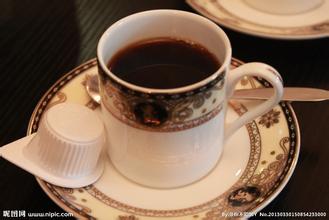A brief introduction to the development of the planting base map of Bourbon Rivida beans under regional conditions of Hillado coffee beans in Brazil

Brazil makes full use of the tropical geographical environment and attaches importance to the production and sale of coffee, so that the output, export volume and per capita consumption of coffee have been ranked first in the world for many years, and have been known as the "kingdom of coffee". But the hometown of coffee is not in Brazil, but in the Ethiopian province of Kafa in Africa. Brazilian coffee beans refer to all coffee beans grown in Brazil. Except for Sanduo, Brazilian beans are mostly "cheap and good" coffee. Can be used for mass production of comprehensive coffee beans, most of which are re-roasted. The main raw material of instant coffee is also Brazilian coffee beans.
When the coffee bean germ is very fresh, it is artificially refined and naturally dried in the vulva for about 60-70 days, so that the sweetness of the pulp fully seeps into the bean.
Coffee was introduced into Brazil after the 18th century. In 1727, coffee was introduced into Port Belem, Brazil from Guyana. Since then, coffee has settled in Brazil, mainly in the southeast coastal areas of Brazil. Namely, Sao Paulo, Parana, San Esprito, Minas Gerais and other four states. From the end of the 18th century to the 1920s, coffee production was at its peak in Brazil, which once accounted for 75% of the world's total coffee production. Over a long period of time, coffee exports accounted for 2. 3% of Brazil's total export revenue, making Brazil a well-deserved "coffee kingdom". The economic crisis that broke out in 1929 sharply reduced the world consumption of coffee, which dealt a heavy blow to the Brazilian coffee economy.
Since then, the proportion of Brazilian coffee production in export earnings has plummeted. In the past 30 years, with the rise and development of Brazil's modern industry, especially steel, shipbuilding, automobile, aircraft manufacturing and other industries, the status of coffee in the national economy has declined year by year, but it is still one of the pillars of Brazil's economy. And Brazil is still the world's largest coffee producer and exporter with a low sour taste, coupled with the sweet and bitter taste of coffee, the import is very smooth. But also with a hint of grass aroma, slightly bitter in the fragrance, smooth and smooth, with a pleasant aftertaste.
Brazil is located in the Latin American region of the Western Hemisphere, located in the eastern part of South America and on the west coast of the Atlantic Ocean, bordering all countries on the South American continent except Ecuador and Chile; most of its territory lies between the equator and the Tropic of Cancer. It is the most tropical country in the world. The territory has a tropical rain forest climate and a tropical prairie climate. The superior tropical natural conditions are very suitable for the growth and production of tropical cash crop coffee. Coffee belongs to Rubiaceae, like heat, about 40 species, and cocoa, tea and called "the world's three beverages".
Important Notice :
前街咖啡 FrontStreet Coffee has moved to new addredd:
FrontStreet Coffee Address: 315,Donghua East Road,GuangZhou
Tel:020 38364473
- Prev

Brief introduction of grinding scale for taste and quality characteristics of Brazilian Hilado boutique coffee bean flavor description treatment method
While the rest of the pulp (slime) stabilizes the first appliance in the removal of water. With the latest mechanical improvements, less pure water can be used. The wood is stored in stable water and beaten well for at least two weeks. Air-dried common beans purify Brazilian natural beans, green beans, immature, mature beans, even without the separation of rattan dried beans, with the sun (sunlight), and in about
- Next

Flavor description of Angolan Coffee Market A brief introduction to the Price of Fine Coffee
The market for Angolan coffee: in the mid-1970s, 98 per cent of Angola's annual coffee exports were Roberts (probably the best in Africa), but total production fell in 1990. Most of Angola's coffee is exported to the United States, the Netherlands and, of course, the Portuguese government of Angola is currently working on a development plan to revitalize coffee production.
Related
- Detailed explanation of Jadeite planting Land in Panamanian Jadeite Manor introduction to the grading system of Jadeite competitive bidding, Red bid, Green bid and Rose Summer
- Story of Coffee planting in Brenka region of Costa Rica Stonehenge Manor anaerobic heavy honey treatment of flavor mouth
- What's on the barrel of Blue Mountain Coffee beans?
- Can American coffee also pull flowers? How to use hot American style to pull out a good-looking pattern?
- Can you make a cold extract with coffee beans? What is the right proportion for cold-extracted coffee formula?
- Indonesian PWN Gold Mandrine Coffee Origin Features Flavor How to Chong? Mandolin coffee is American.
- A brief introduction to the flavor characteristics of Brazilian yellow bourbon coffee beans
- What is the effect of different water quality on the flavor of cold-extracted coffee? What kind of water is best for brewing coffee?
- Why do you think of Rose Summer whenever you mention Panamanian coffee?
- Introduction to the characteristics of authentic blue mountain coffee bean producing areas? What is the CIB Coffee Authority in Jamaica?

